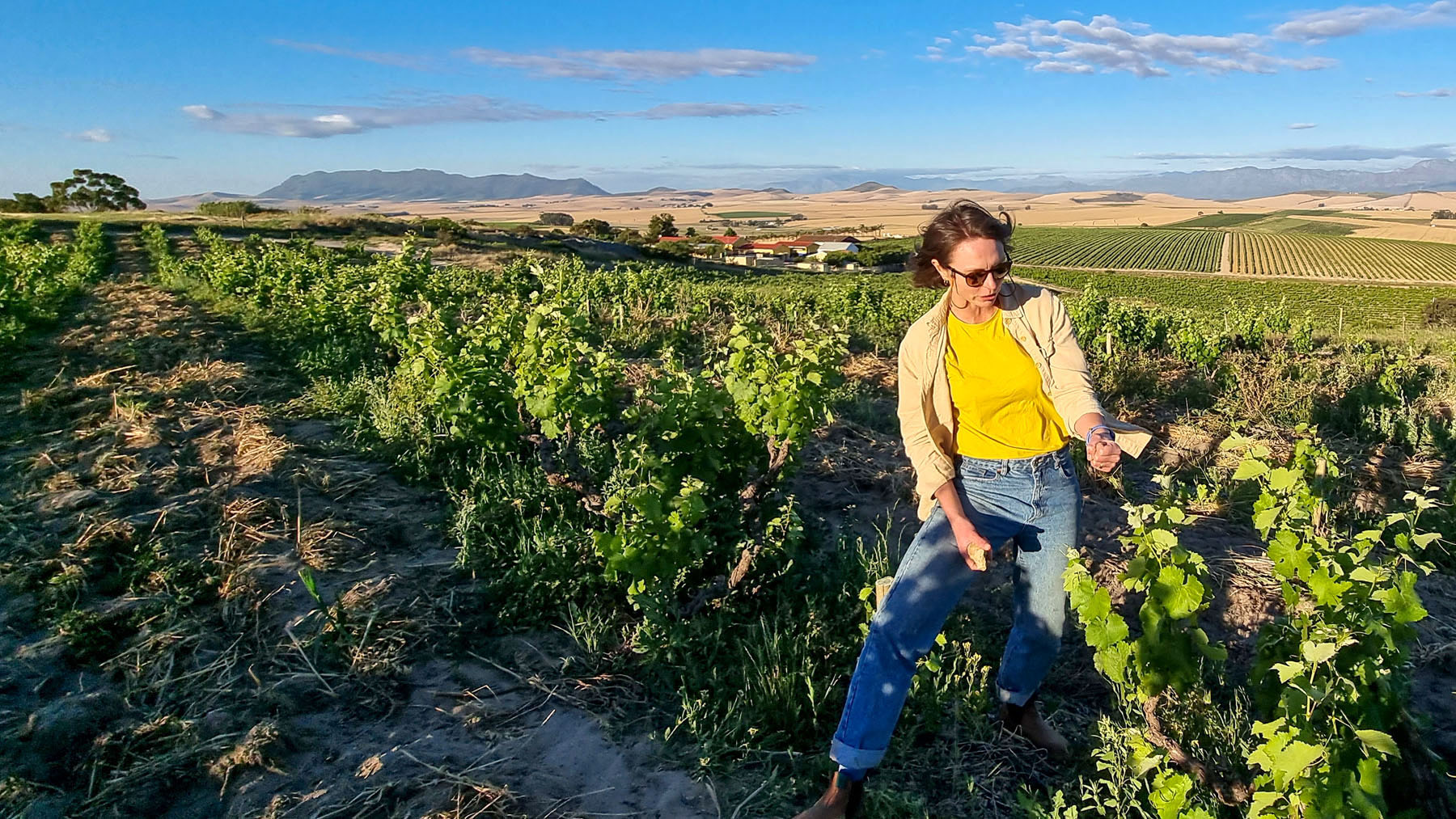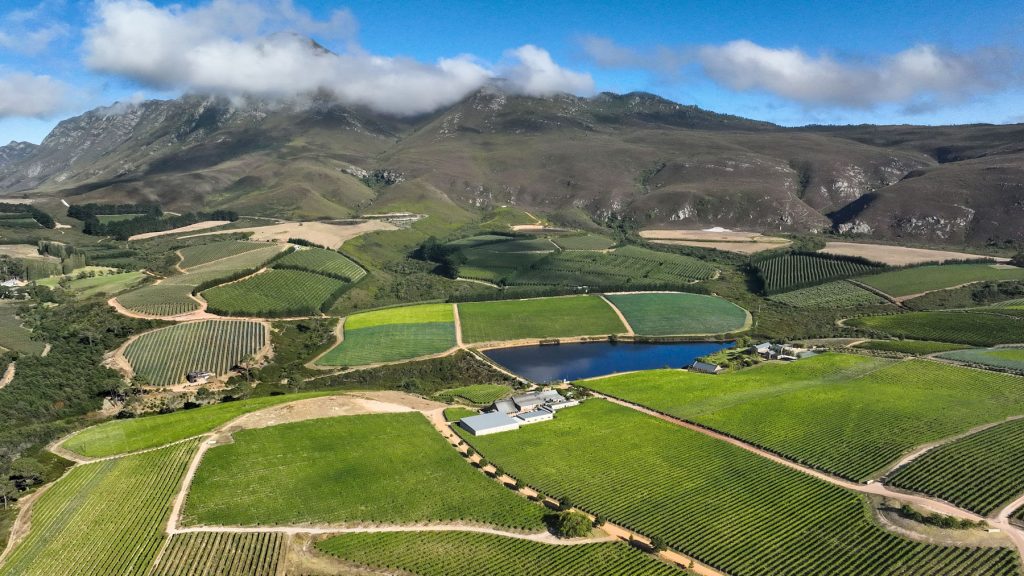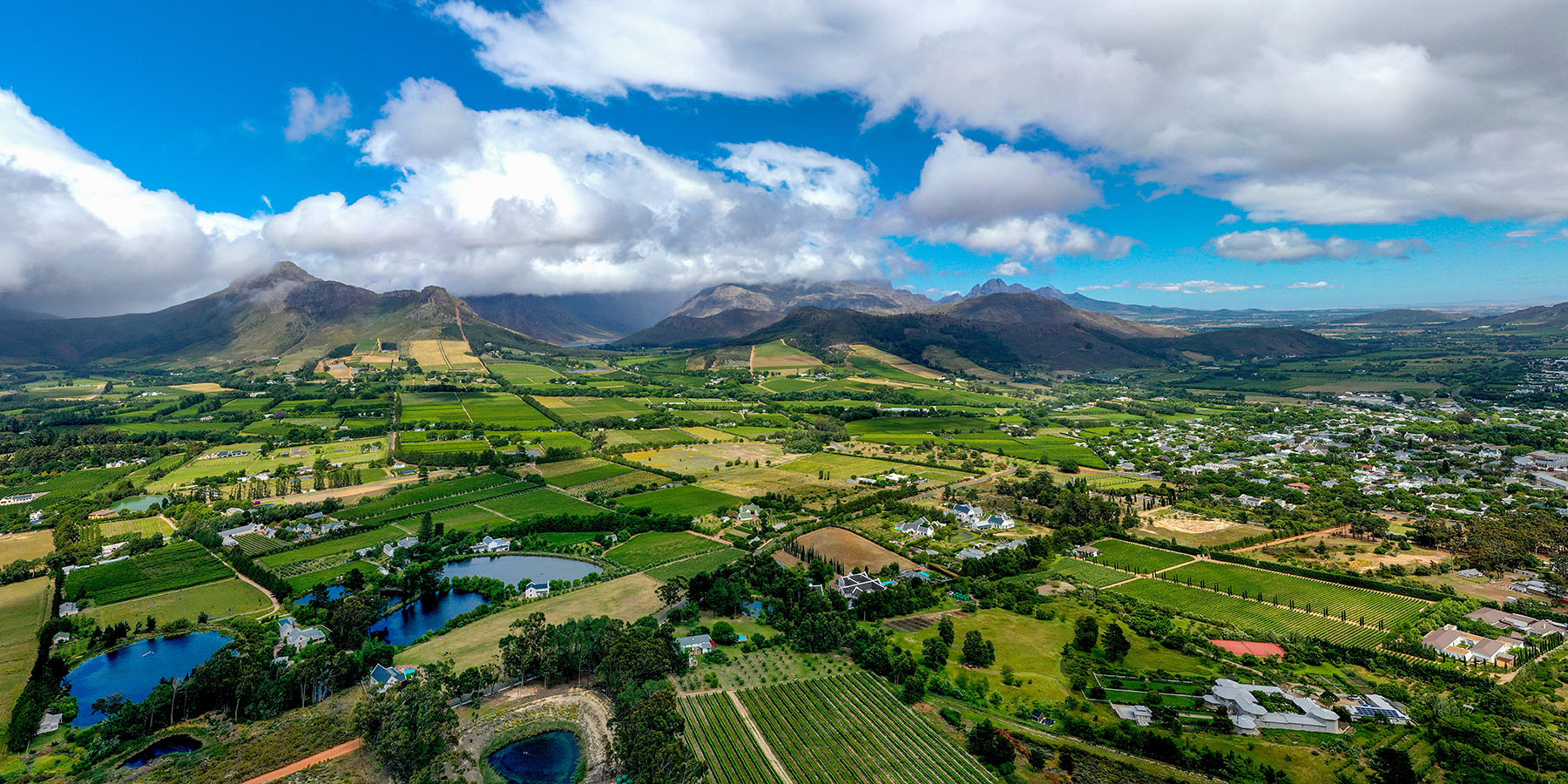To visit the winelands of the Western Cape is to travel through time, to experience a wine and culinary culture
that spans over 365 years, to appreciate how the Old World of winemaking became the New World, and then
found an exciting fusion that spans continents and generations.
I was born in South Africa, and still have many fond memories of the people, the culture, the wildlife and of course, the winelands. One of my last experiences before moving abroad as a young man over forty years ago
was to tour Stellenbosch and Franschhoek.
As a wine photographer, I have been fortunate enough to visit the winelands four times in the past few years.
I’ve stayed over a month each time, meeting the people behind the modern wine industry, learning about the
ancient geology, which makes this terroir so complex and unique, and discovering a world of wine and culinary expertise on par with the best European traditions.
I began my renewed South African wine journey in Cape Town, the Mother City, which was founded in 1652 as
a supply station for Dutch trading ships sailing to the East. It is both the gateway to an adventure and the site
where the first harvest of wine grapes was recorded on February 2, 1659. Today, Cape Town boasts a lively
waterfront, incredible beaches, restaurants and cafes that offer everything from fantastic seafood, through
vegan and international cuisines, to the local tradition of perfectly grilled steaks, all within view of the iconic
Table Mountain.
Taking the cable car up Table Mountain is a breathtaking experience. From the top of this prominent landmark, I explored the protected native Fynbos flora unique to the Western Cape, and enjoyed the spectacular view of the city and surrounding nature below with a freshly poured draft beer in hand from the mountaintop cafe.
My visit to the Constantia wineries was a truly humbling experience. Established in 1679, the 750-hectare farm
developed a reputation for producing highest quality wines that were exported to Europe. Decades later, the
property was divided into three parts, with Groot Constantia and Klein Constantia wineries still in existence
today.
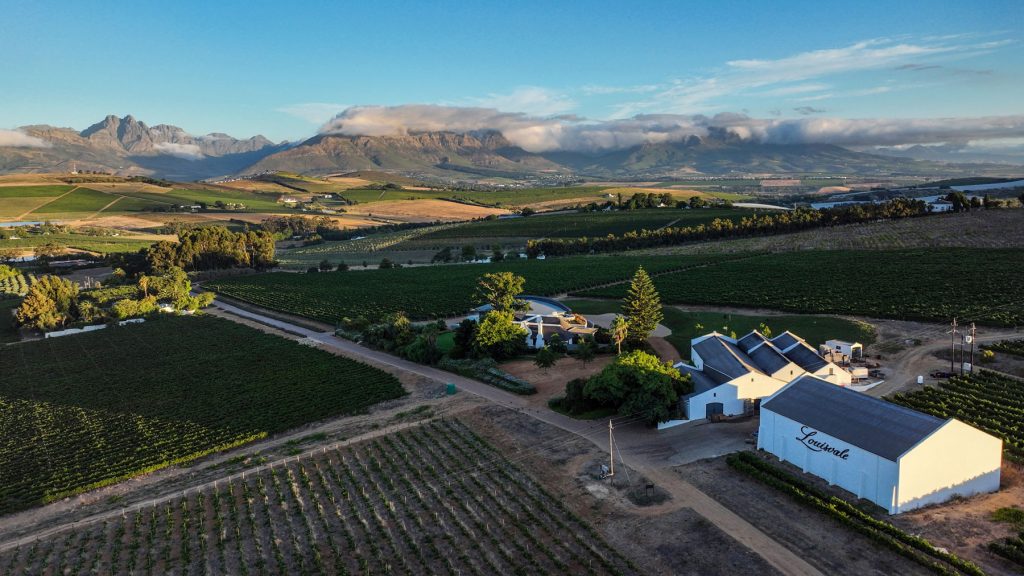
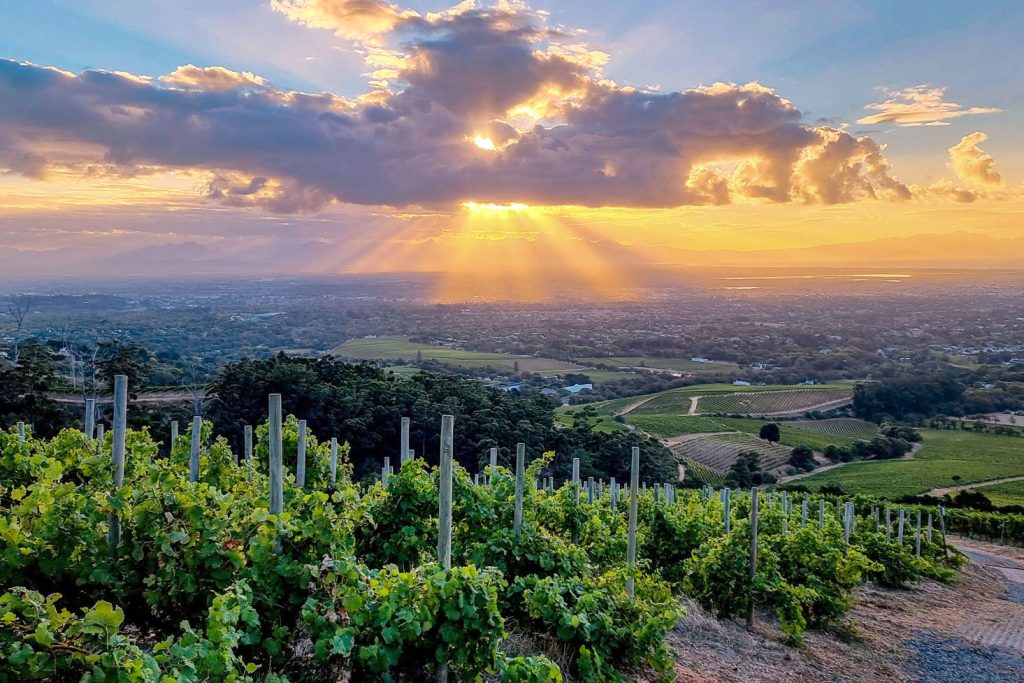
These have changed hands many times over the years, and the original vineyards have long been replanted, but the historic importance of Constantia remains unchallenged when telling the story of the South African wine industry. Vin de Constance, a dessert wine made from Muscat de Frontignan grapes, was a favorite of European royalty and emperors, including Napoleon Bonaparte who insisted on it during his exile on St. Helena.
I was awed by the serenity and beauty of the estates when I was invited to photograph the harvest at Klein Constantia, standing between the rows of vines planted on the ancient decomposed granite soils on the back slopes of the Table Mountain range, while watching the sunrise over False Bay. Klein Constantia specializes in white wines, particularly Sauvignon Blanc, which thrives in its cool maritime climate. I was privileged to a comparative tasting of the various bottlings, as well asrecent vintages of Vin de Constance. This is really one of the world’s great dessert wines!
Just as the Cape Colony expanded eastwards, so did my journey. Weeks were spent exploring the neighboring
wine of origin districts of Stellenbosch and Paarl, the traditional cornerstone areas of the industry. I stayed o wine estates, waking up to the sounds of nature and magnificent views towards the mountains that embrace the towns. I joined winemakers at their homes for family Braai’s (local BBQ’s) and on vineyard
visits. I documented harvests and learned about the unique terroir and diversity of the Cape’s ancient soils, the oldest on the planet.
When I attended the exclusive Cape Wine Masters annual auction, I was tempted to bid on some unique wines. In stark contrast, just days later, I enjoyed the popular Noble Vice wine festival where I reconnected with the wine people and winemakers I befriended during my visits. For two days at the end of October, thirty different wineries each day present their wines to an enthusiastic multiracial and multicultural crowd, something I never experienced growing up during the Apartheid years.
The political upheaval that reformed the country has been particularly embraced in the winelands. South Africa is a leader in the Fairtrade movement, producing two thirds of all wine sold globally under the Fairtrade label. At Bosman, I met a traditional white farming family who went beyond this certification, reaching out to their workers, and inviting them to share in the equity of the estate through the Adama Foundation trust.
No visit to the Cape is complete with exploring the unique range of culinary experiences the Cape has to offer,
from Fish & Chips stalls, through traditional steakhouses, to gourmet chef restaurants. At Babylonstoren
Winery, Babel restaurants serves steak on bespoke plates, at Cape Town’s Pot Luck club I dined at the bar
watching the chef’s turn food into works of art, and at La Colombe in Constantia, a four-hour multi-course meal with wine pairing excited my senses and my palate.
South Africa’s wine-making community goes well beyond the limits of history and tradition, and in recent
decades has expanded to new and exciting areas. The Hemel-en-Aarde valley, a cold maritime climate area
known for producing excellent Pinot Noir and Chardonnay, offers both magnificent views and exciting
experiences. Translated from Afrikaans to “Heaven and Earth”, the Hemel-en-Aarde is indeed one of the most
beautiful wine regions in South Africa.
I have had the pleasure and privelage to both photograph, and dine, at Creation Wines. This relatively young,
modern winery has the distinction of repeatedly being awarded the accolade of one of the World’s Best
Vineyards. The first time I went there, my day’s photography was cut short by rain, and a friend insisted I go to
Creation. They weIcomed me despite my workclothes and boots, and now Creation has become my go-to treat
on every visit, to enjoy the seasonal wine and food pairing lunch, surrounded by green vineyards and dramatic
mountains.
Another favorite area of mine is the Swartland, just a short drive north of Stellenbosch, where the climate
changes with the mountains from cool maritime to largely hot and dry, only tempered by the winds coming in
from the Atlantic Ocean to the west. At the end of the 20th century, a group of visionary winemakers turned this traditionally grain-producing area, with pockets of old vines and unique soils, into a highly-respected region that produces some of the country’s most distinctive and most sought-after wines.
At AA Badenhorst I walked through vineyards planted in 1962, and then joined the staff for lunch on the porch
of the farmhouse. Nadia Sadie took me through the old Chenin Blanc vineyards that surround her and her
husband David’s namesake winery, and Andrea Mullineux proudly took me round her family’s Roundstone Farm where the vineyards were designed by the renowned agronomist Rosa Kruger.
Talking about Chenin Blanc, this is the perfect time to remember that it is South Africa’s most widely planted
grape, with twice as much planted in the Cape as in France. This versatile and hardy variety has adapted well to the subcontinent’s microclimates and varied terroirs, with adventurous winemakers using Steen, as it is locally called, to produce everything from traditional method sparkling wines, to mineral-rich dry whites, and world-class dessert wines.
In stark contrast to the Swartland is the Franschhoek Valley, also just an hour from Stellenbosch. Here the lush, green vineyards share the landscape with centuries old Cape-Dutch farmhouses. With stunning mountains overlooking the valley, winemaking in Franschhoek is true to its Huguenot roots, is characterized by French-style production methods, and restaurants that offer a true fusion between local produce and continental cuisine. On my last visit, I began the day at Colmant, which makes only Champagne-style wines, walked along the main road, popping into the many art galleries that welcome visitors to this unique town, and had an amazing tapas-style meal at Chef’s Warehouse, a contemporary country restaurant.
South Africa is much more than wine and food. It is a country blessed with rugged coastlines and arid deserts,
towering mountains and flowering valleys. It is also renowned for protecting its diverse wildlife. I have enjoyed
waking up to the penguins at the Boulders Beach sanctuary, searched for (and found) whales off the Cape South Coast, and my favorite wildlife experience of all – going on safari game drives, with experienced guides and rangers who led us to herds of elephant, elusive leopards and endangered rhinos.
Now is the time to visit this wonderful country. Allow me to share my experiences with you.
